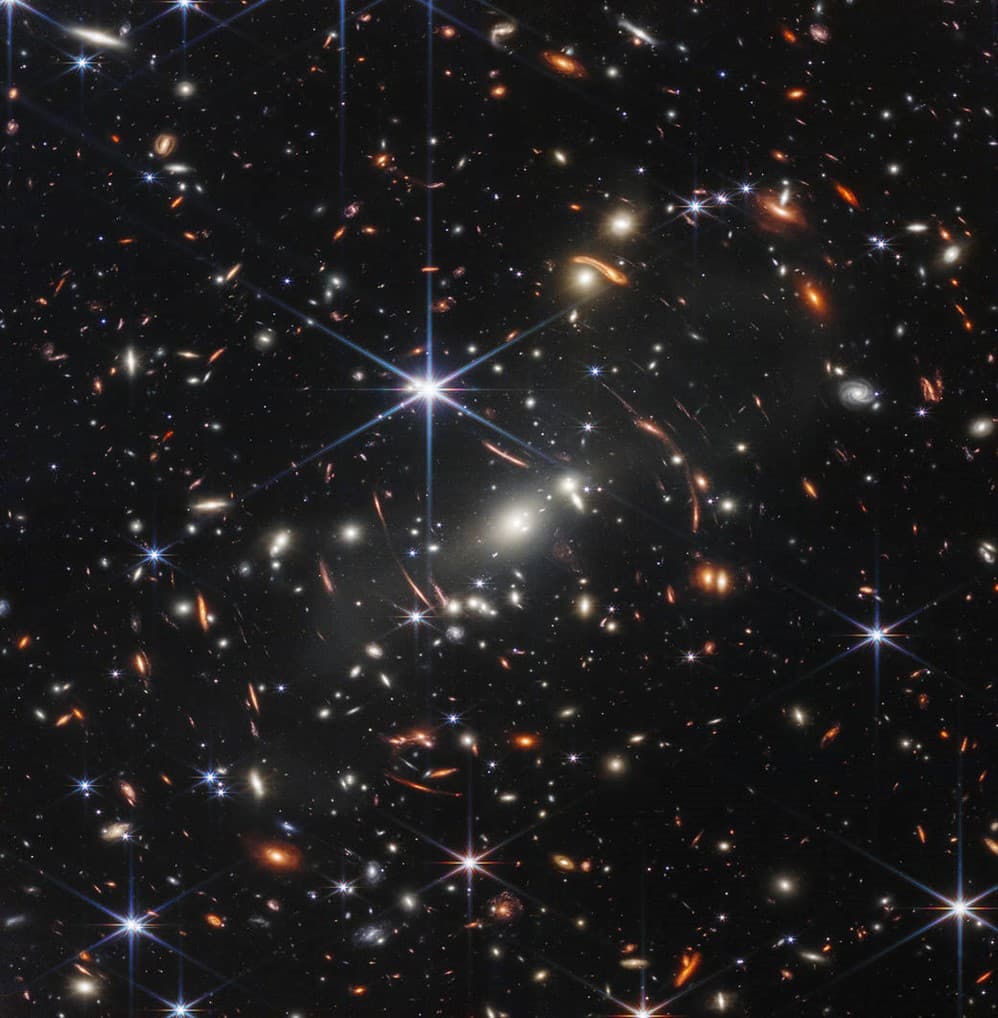Introduction and Rationale
“I think of space not as the final frontier but as the next frontier. Not as something to be conquered but to be explored.” – Neil deGrasse Tyson
I was sitting in my Alien Earths seminar on July 12, 2022, when the first James Webb Space Telescope photographs were released. When Yale professor, Sarbani Basu, pulled up the picture (see Figure 1) on the large screen, and it was breathtaking! She explained that the bright white spots with the “spokes” were stars, and the yellow and orange splotches were other galaxies. As I began to informally count the galaxies in my head and relish in amazement and wonder, Basu revealed that this image represents the patch of sky if a grain of sand is held up with an extended arm from Earth!

Figure 1: The first photograph from the James Webb Space Telescope Credits: NASA, ESA, CSA, and STSci
When I consider Neil deGrasse Tyson’s notion with the first photograph from the James Webb Space Telescope the implication of exploring the new frontier is unimaginable.
This curriculum unit I created in the Alien Earths seminar is designed for my fourth-grade students. It explores the eight planets, dwarf planets, moons, and exoplanets. Students will make comparisons and contrast celestial bodies. They will create scale models of the planets, and this modeling will help students grasp the vastness of our solar system and universe. The unit will also investigate the idea of habitability. In the last 25 years, NASA and other space agencies throughout the world have made some incredible discoveries. I want students to understand that our knowledge of the universe is constantly changing.
The creation of this curriculum unit is important for my students, so they can learn the most current information about planets and exoplanets. Not much has changed since I was in school regarding how solar systems are taught in elementary school. Our knowledge of the solar system was based on that one model, hence had many misconceptions. The knowledge of our solar system is expanding tremendously due to the research of astrobiologists, astronomers, and the work of NASA and other organizations around the world. The students, not only mine, deserve to learn up-to-date information that goes beyond the minimum state and national standards.

Comments: